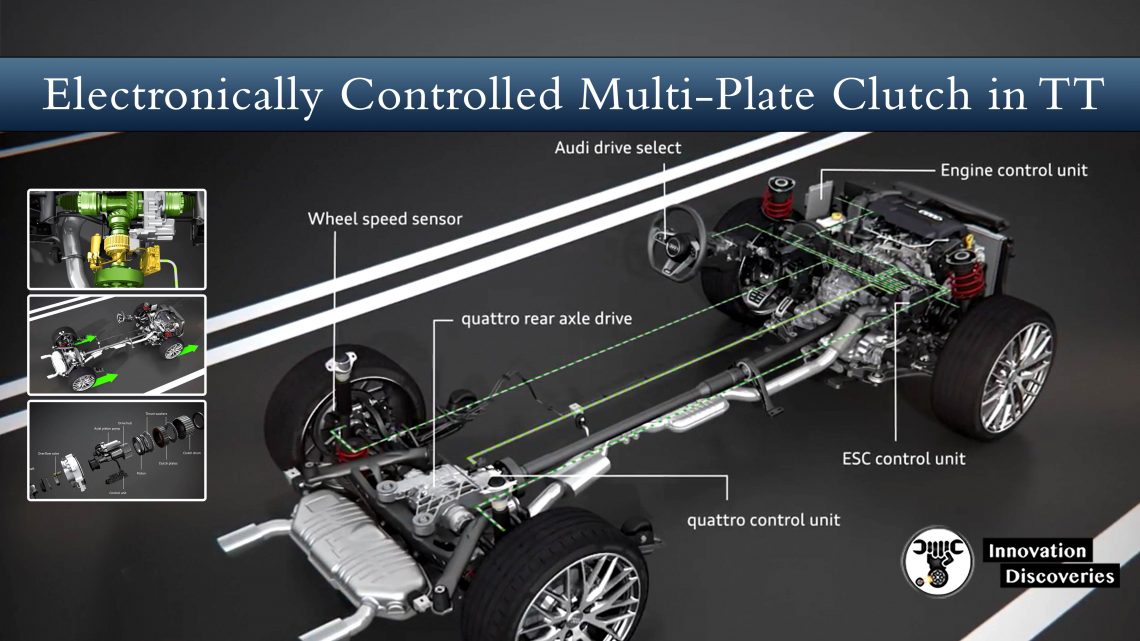
The Quattro permanent all-wheel drive system (optional feature on the TT 2.0 TFSI, and standard on the TTS) is a unique feature of the compact Audi sports car.
The key innovations are an advanced electro-hydraulic multi-plate clutch as well as new all-wheel drive software developed specifically for the TT.
The weight-optimized design and elimination of the accumulator enabled a weight reduction of 1.5 kilograms (3.31 lb) compared to the previous component.
The clutch sits at the end of the propeller shaft in front of the rear axle – an installation position that benefits axle load distribution.
For the required torque from the wheel software, the electric axial piston pump builds hydraulic pressure up to 38 bar.
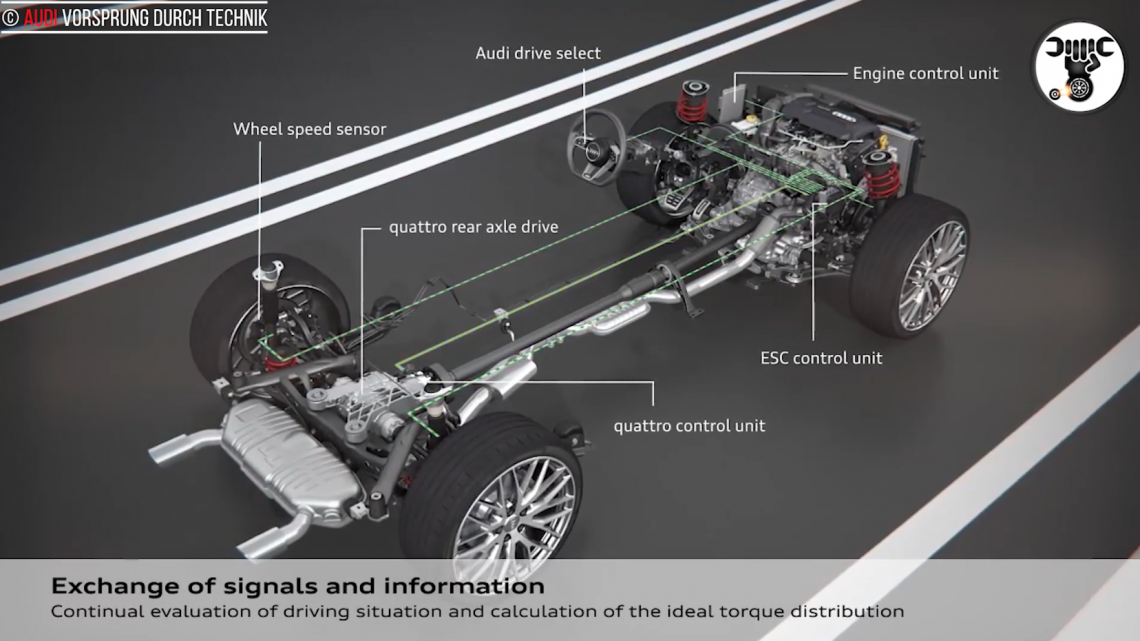
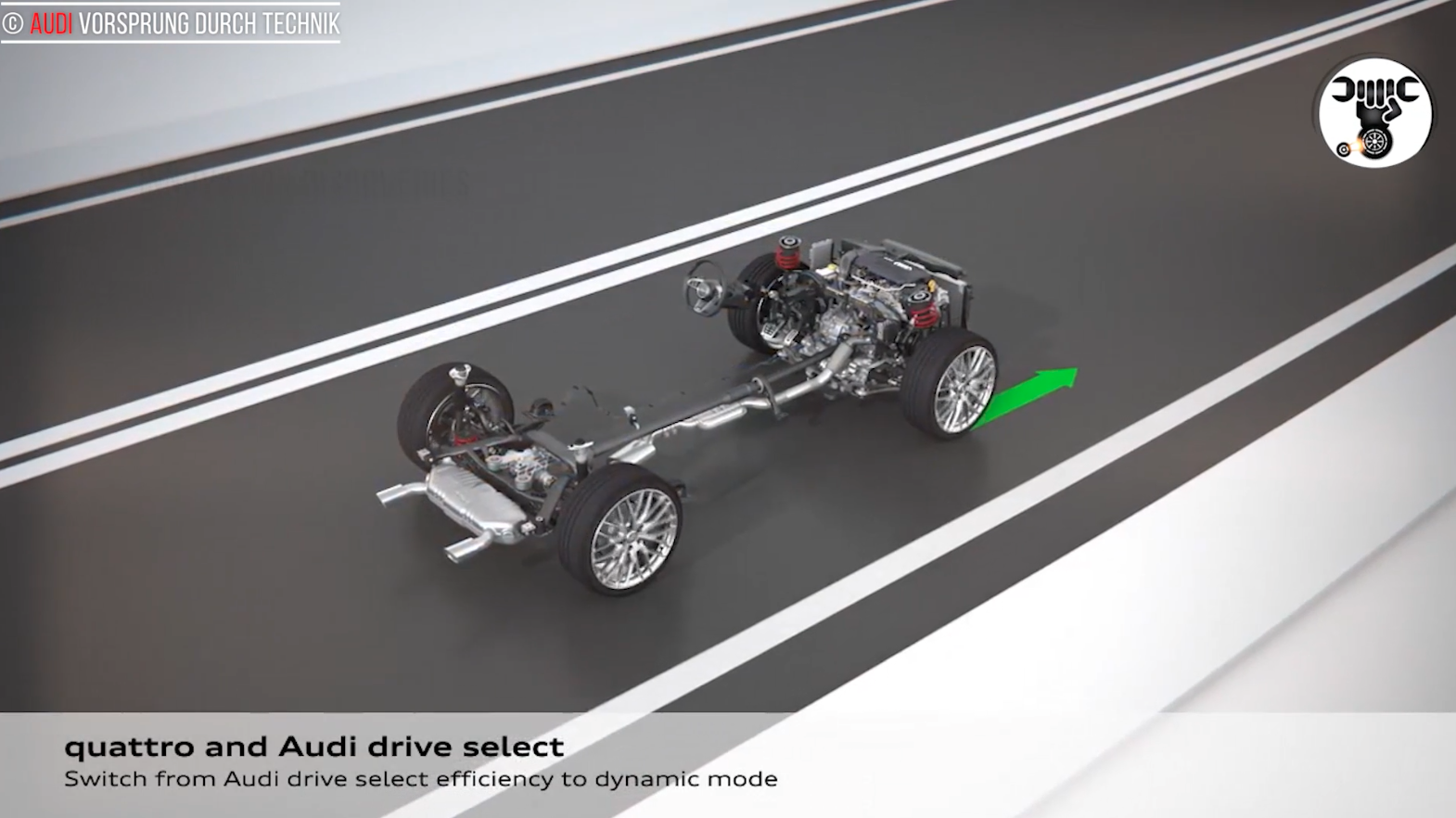
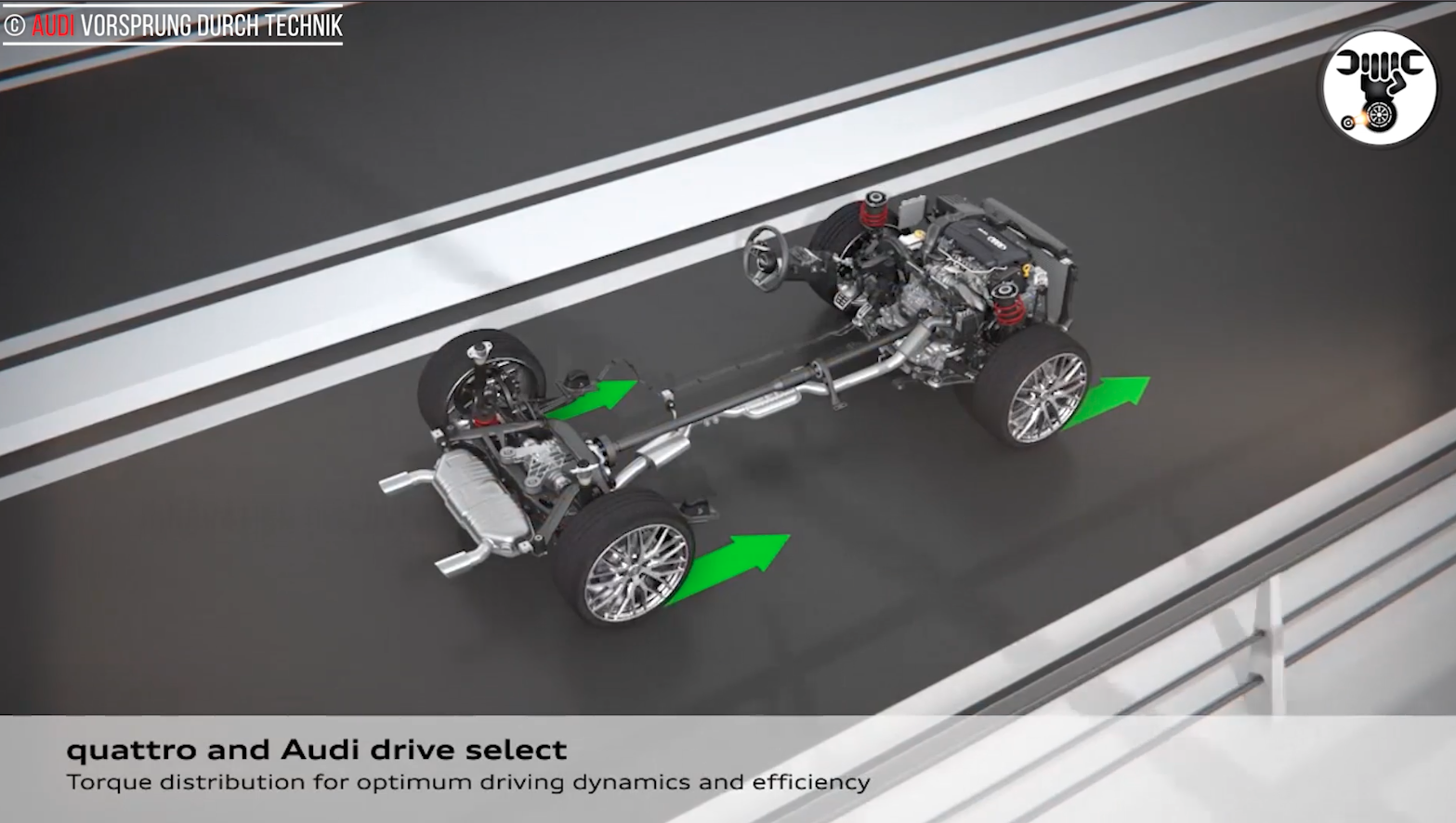

The friction plates are pressed together, and this action sends driving torque continuously to the rear axle.
Audi has completely redesigned the electronic control of the torque distribution and tailored it specifically for the TT.
This is the first time the all-wheel drive system has been integrated into the Audi drive select dynamic driving system.
As the new control philosophy includes more driving dynamics relevant to sensor sizes than beforehand, the driver has the ideal torque distribution to all four wheels in every situation.
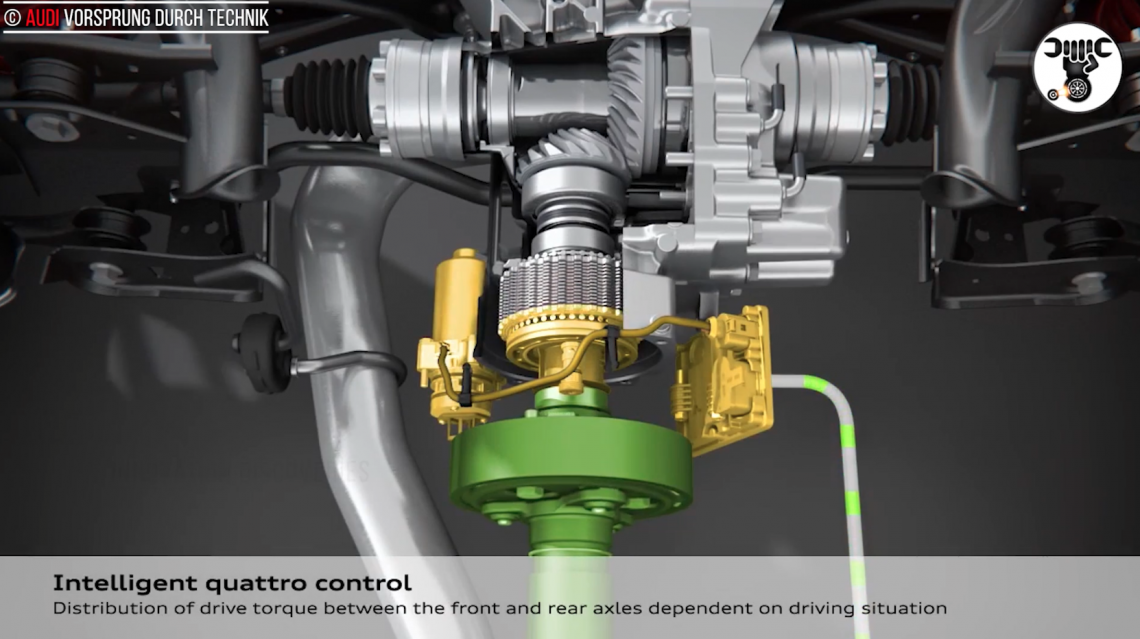
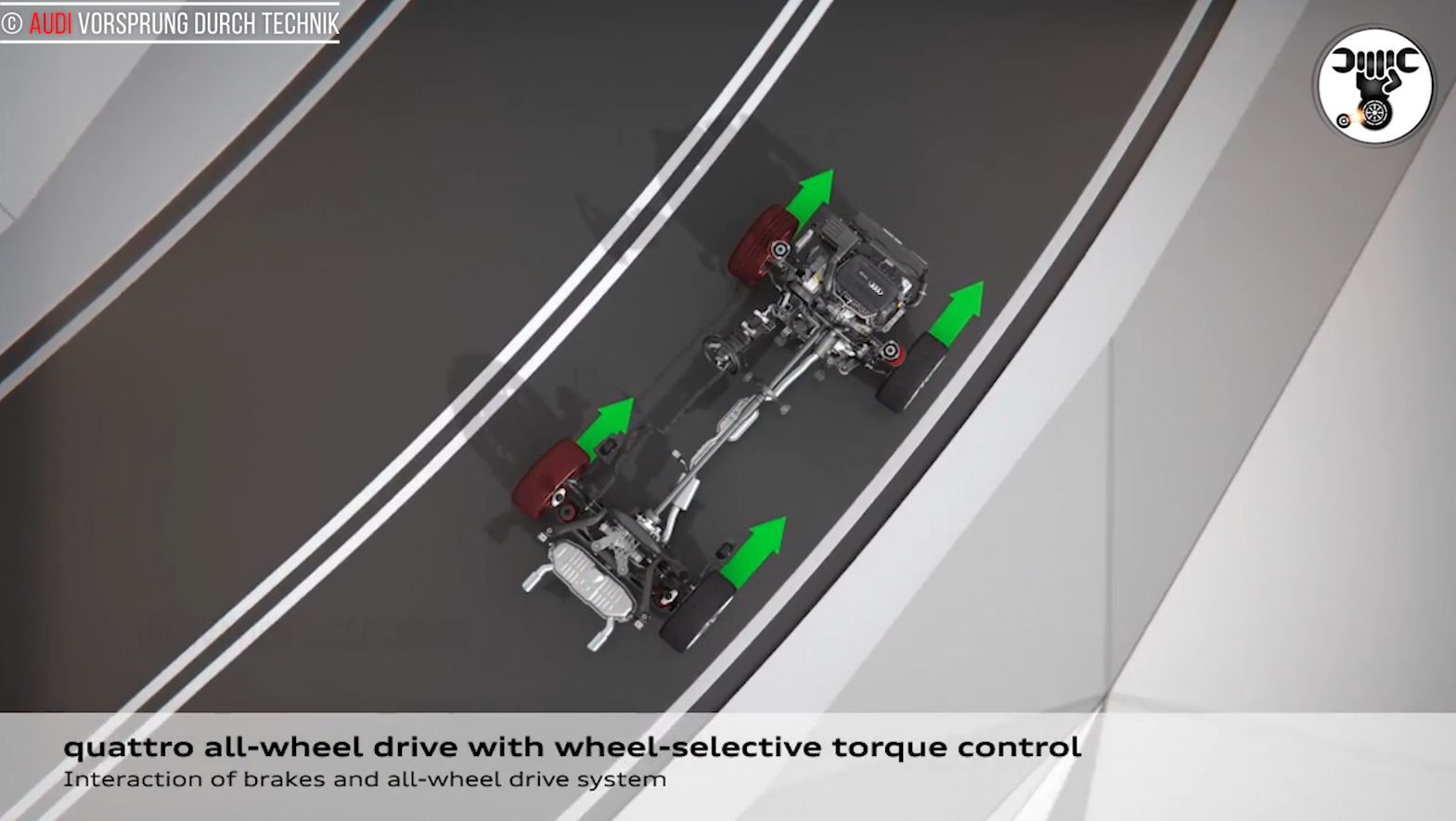
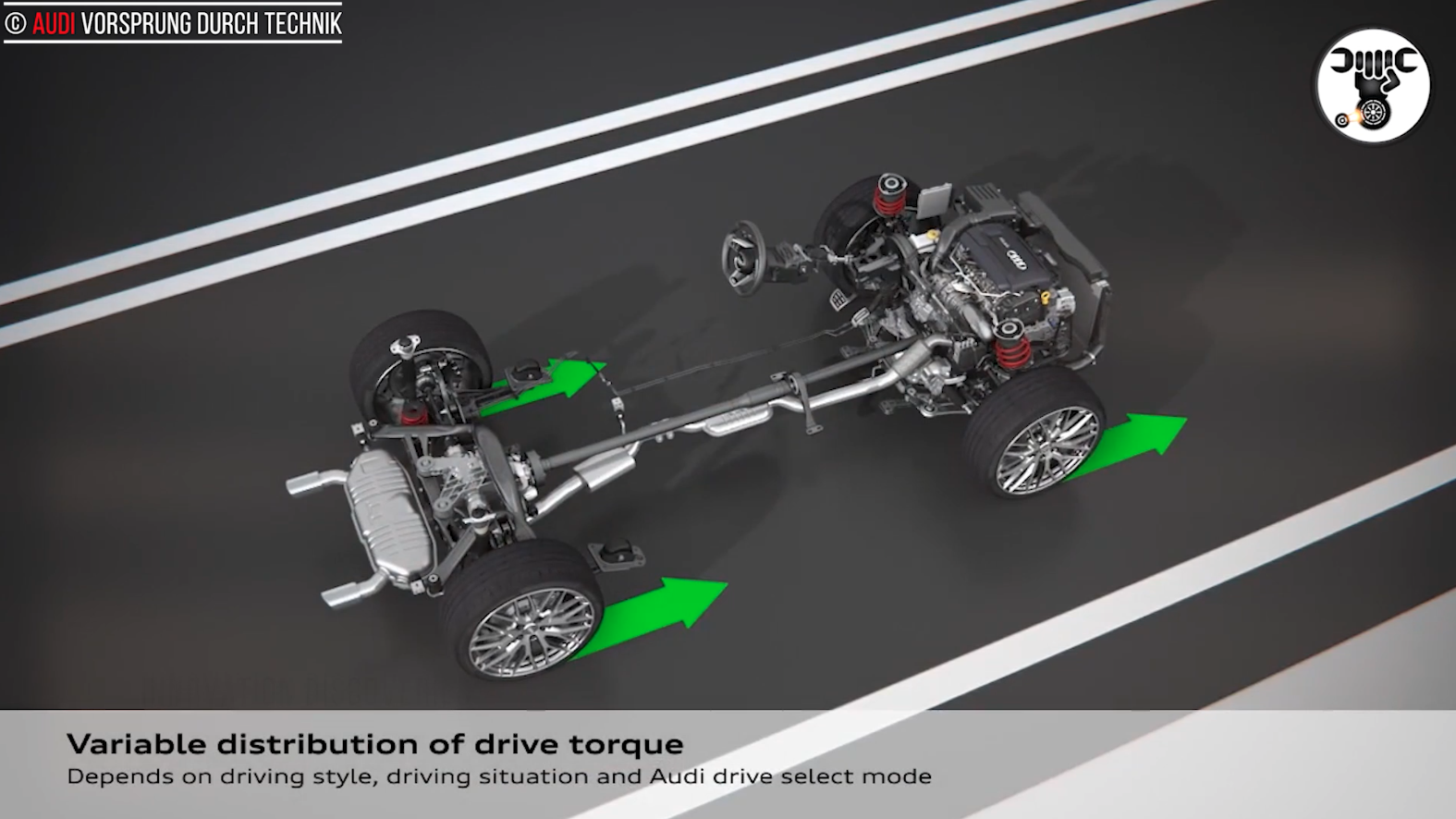

This means that the traction control system can already send driving torque to the rear axle when the driver turns the steering wheel during sporty driving.
As soon as the driver steps on the gas, the driving torque pushes the Coupé seamlessly into the bend without any initial understeering.
For load changes, torque distribution allows targeted turning of the TT into the bend, ensuring a sporty driving feel.
For drifts, it offers maximum control and reliability—when exiting a bend the front axle straightens out the Coupé.
When developing the new all-wheel drive software, one particular area of focus was enhancing the performance level.
The precise determination of driving conditions, road characteristics, and driver type means that torque distribution can be calculated for optimal performance and set via the all-wheel drive system.
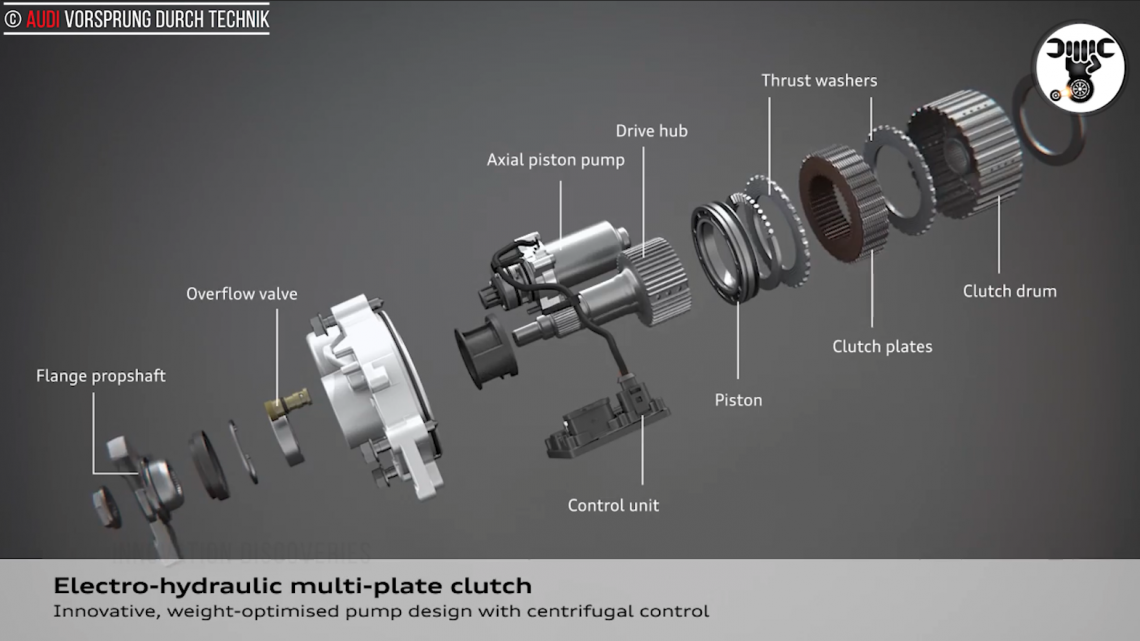
Because the software always knows the exact all–wheel requirements, in efficiency mode, even a temporary cutoff is possible.
However, due to sensitive monitoring of driving conditions, the all-wheel drive is activated on a predictive basis; this process occurs even before the torque is required again at all four wheels.
This measure allows emissions to be reduced even further by up to 1.5 g CO2 per km (2.41 g/mile).
READ MORE:

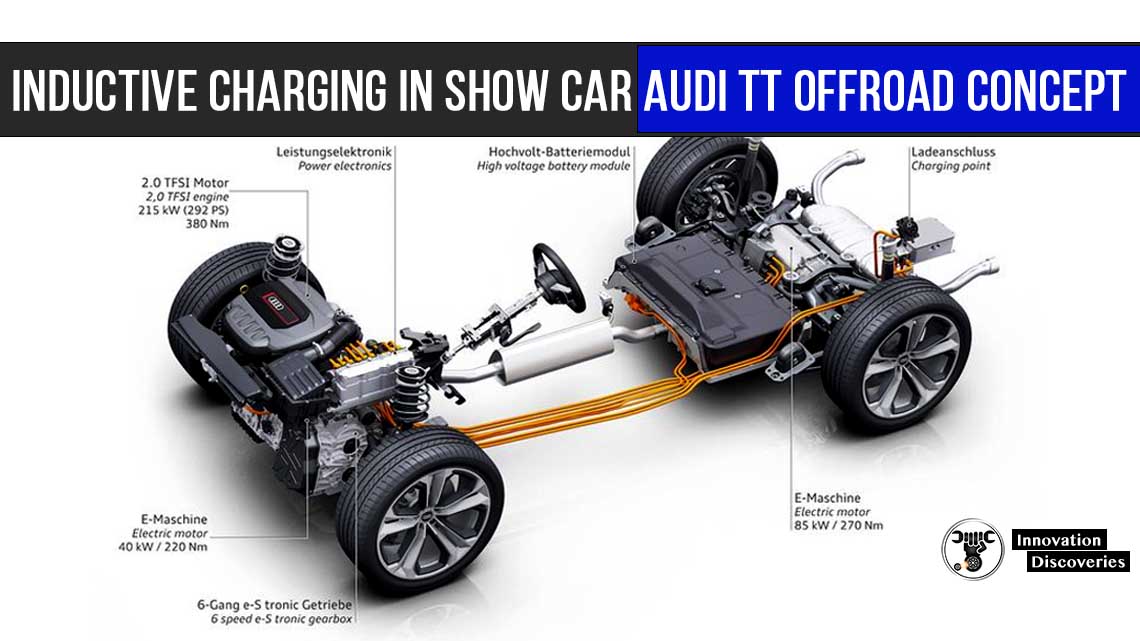
MORE VIDEOS
Visit Forum
Visit Our Friendly Website

Source – Audi-Technology-Portal

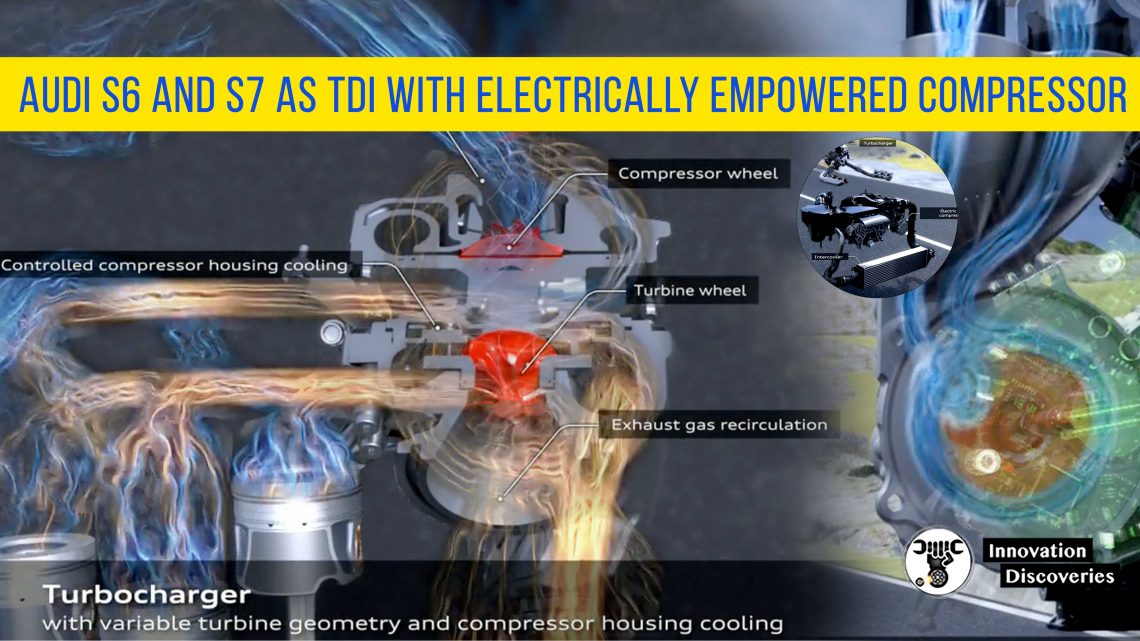

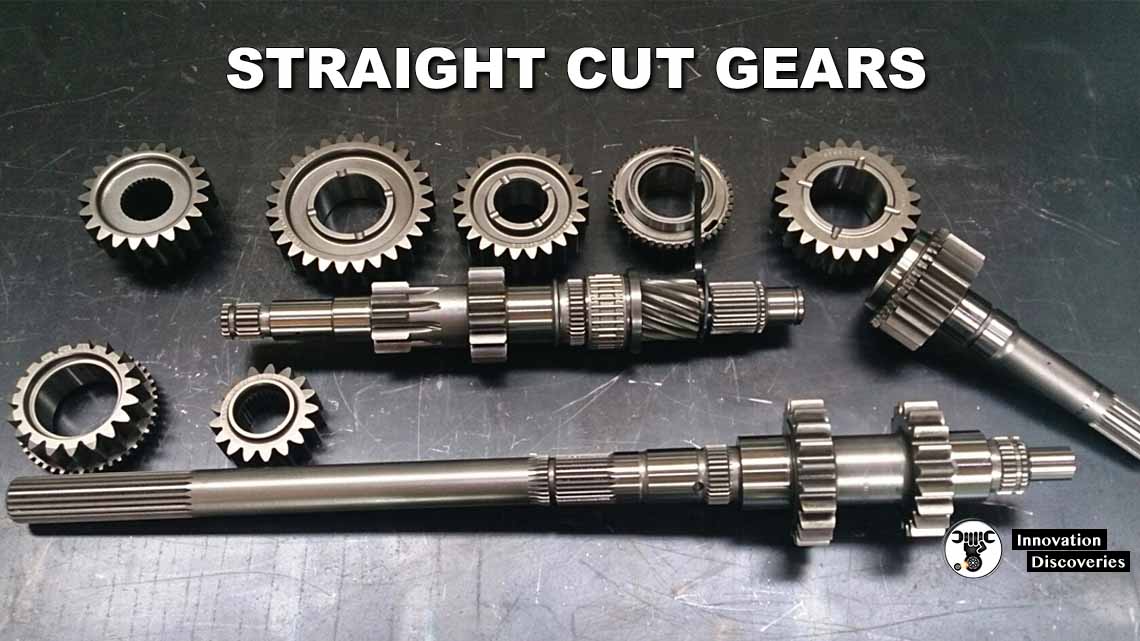
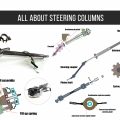
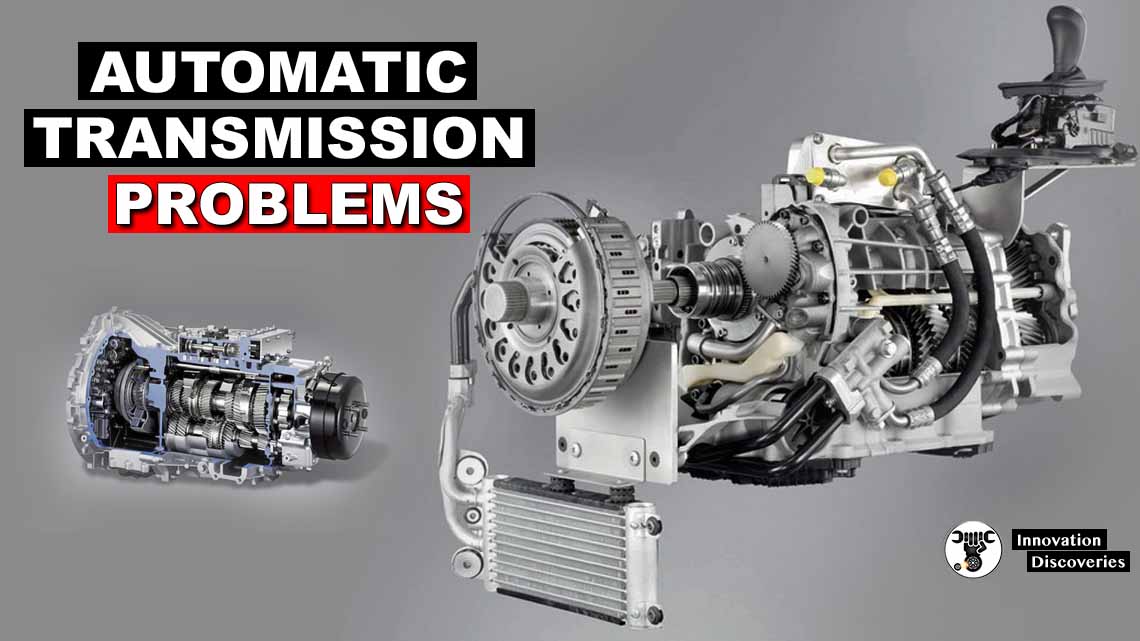
One Comment